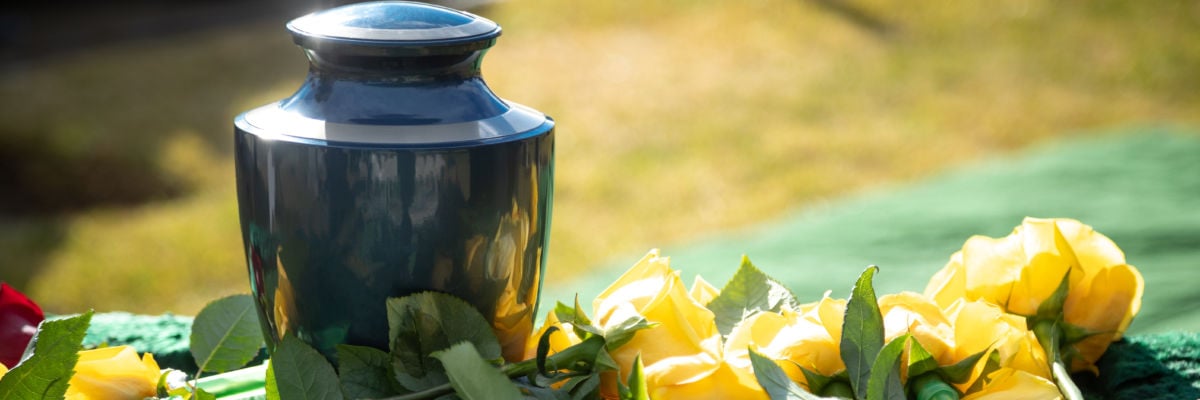
“Remember, man, you are dust, and to dust you shall return” (see Gen. 3:19).
As a child, I remember this sobering invocation every year on Ash Wednesday, as our parish priests marked our foreheads with the remnants of the preceding year’s Palm Sunday.
Each Lent, these words and signs served as stark reminders that our time on earth is limited, death is inevitable, and so each of us will have to render an account to the Good Lord (CCC 1021-1022).
In addition, while the soul of the faithful departed ascends to his particular judgment, and the faithful pray for him, the Church remains concerned with his bodily remains, making sure they’re handled in a manner befitting the dignity of a human person, as well as pre-empting any actions that would call into question the resurrection of the body at the end of time (see CCC 997-1004).
For centuries, the Church forbade cremation, in part because the Roman Empire would burn the bodies of Christian martyrs to preclude their one day rising from the grave. As Fr. William J. Devlin, S.J., writes in The Catholic Encyclopedia,
The pagans, to destroy faith in the resurrection of the body, often cast the corpses of martyred Christians into the flames, fondly believing thus to render impossible the resurrection of the body. What Christian faith has ever held in this regard is clearly put by the third-century writer Minucius Felix, in his dialogue Octavius, refuting the assertion that cremation made this resurrection an impossibility: “Nor do we fear, as you suppose, any harm from the [mode of] sepulture, but we adhere to the old, and better, custom.”
Because of sanitation concerns in some areas, waning grave plots at cemeteries, and the higher costs of traditional burials, the Church relaxed her discipline in 1963, provided that neither the deceased nor their loved ones chose cremation to rail against the resurrection, as did the Roman pagans of millennia past. At the same time, Church law continued to “earnestly recommend” a traditional burial or entombment, preferably in a Catholic cemetery.
In 1969, the Church made formal provision in the Order of Christian Funerals for the committal or entombment of cremated remains, but not for their presence at a funeral liturgy. However, after the U.S. bishops requested permission, the Vatican Congregation for Divine Worship and the Discipline of the Sacraments issued an indult in 1997 for the presence of cremated remains, providing an appendix to the Order of Christian Funerals for such liturgies.
In 2016, in the document Ad Resurgendum cum Christo (ARC), the Congregation for the Doctrine of the Faith (CDF) stated that “the Church continues to prefer the practice of burying the bodies of the deceased, because this shows a greater esteem towards the deceased” (4). At the same time, it reaffirmed the disciplinary shift from fifty years previous:
The Church raises no doctrinal objections to this practice, since cremation of the deceased’s body does not affect his or her soul, nor does it prevent God, in his omnipotence, from raising up the deceased body to new life. Thus cremation, in and of itself, objectively negates neither the Christian doctrine of the soul’s immortality nor that of the resurrection of the body. . . . Cremation is not prohibited, “unless it was chosen for reasons contrary to Christian doctrine.”
In addition, the Church reaffirmed its longstanding discipline against the scattering of ashes, both for religious reasons as well as to prevent Aunt Bea’s mortal remains from becoming food for birds, bugs, or fish, or resulting in some other undignified outcome:
In order that every appearance of pantheism, naturalism or nihilism be avoided, it is not permitted to scatter the ashes of the faithful departed in the air, on land, at sea or in some other way, nor may they be preserved in mementos, pieces of jewelry, or other objects. These courses of action cannot be legitimized by an appeal to the sanitary, social, or economic motives that may have occasioned the choice of cremation (ARC 7).
When the deceased notoriously has requested cremation and the scattering of their ashes for reasons contrary to the Christian faith, a Christian funeral must be denied to that person according to the norms of the law (ARC 8—emphasis added, although, to be clear, subsequent Masses offered for the repose of the person’s soul would certainly be allowed and encouraged).
While I worked at a major grocery chain during my high school and college years, I remember visiting the home of one of our cashiers. “That’s my dad up there,” she said nonchalantly, motioning to a decorative piece on her mantle. “Oh,” I said, trying not to act surprised, as I quickly realized that the artwork was actually an urn with her father’s earthly remains. As you might suspect, she and her father were not Catholics. The CDF also reiterated Church discipline against such home memorials.
The conservation of the ashes of the departed in a domestic residence is not permitted. Only in grave and exceptional cases dependent on cultural conditions of a localized nature, may the ordinary, in agreement with the Episcopal Conference or the Synod of Bishops of the Oriental Churches, concede permission for the conservation of the ashes of the departed in a domestic residence (ARC 6, emphases added). . . .
When, for legitimate motives, cremation of the body has been chosen, the ashes of the faithful must be laid to rest in a sacred place, that is, in a cemetery or, in certain cases, in a church or an area, which has been set aside for this purpose, and so dedicated by the competent ecclesial authority (ARC 5).
The same burial norms would apply to those who had willed their body for scientific research.
Because of the increasing popularity of scattering at least some of the deceased’s cremated remains in places beloved by them, and because of the Church’s enduring ban against such, the Dicastery for the Doctrine of the Faith (DDF) in December 2023 issued a response, expanding the exception given in 2016 to Eastern Catholic churches. Local Church officials may now permit a family “to preserve in an appropriate way a minimal part of the ashes of their relative in a place of significance for the history of the deceased person”—for example, in the home of a surviving loved one—“provided that every type of pantheistic, naturalistic, or nihilistic misunderstanding is ruled out and also provided that the ashes of the deceased are kept in a sacred place.”
The DDF did not explicitly address whether mortal remains may be disinterred to accommodate such a family request.



